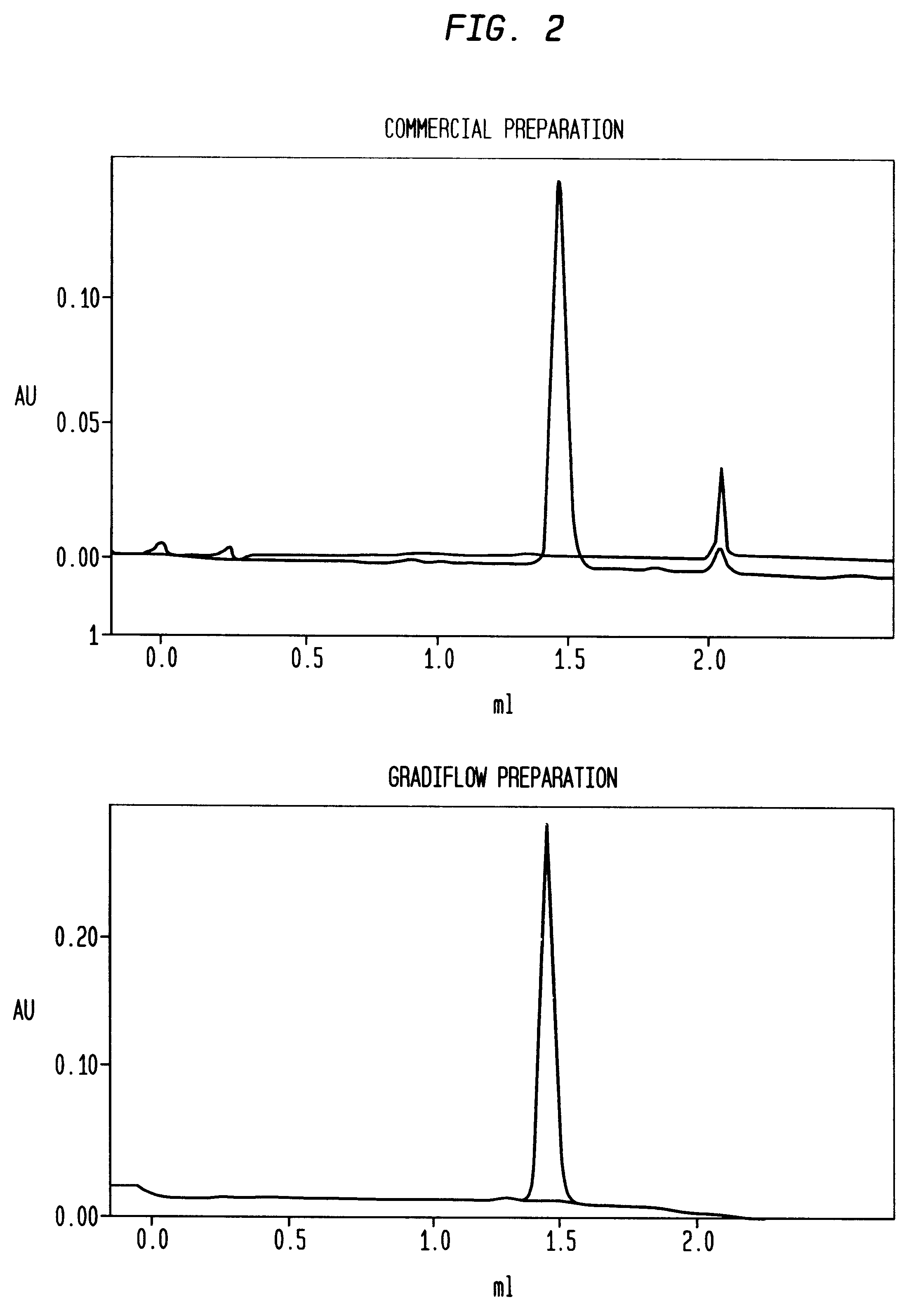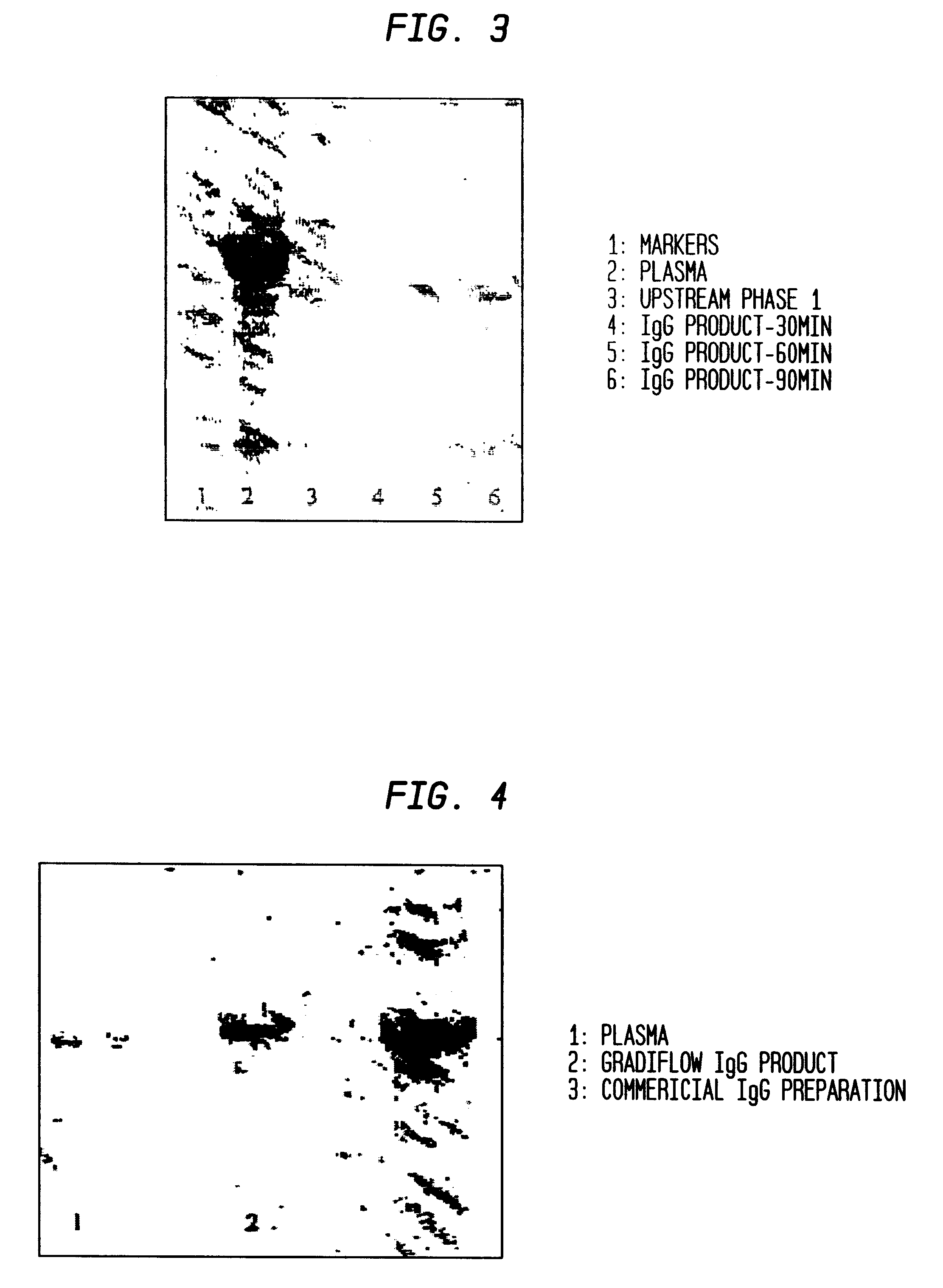Separation of plasma components
a plasma component and plasma technology, applied in the direction of peptide/protein ingredients, fluid pressure measurement by electric/magnetic elements, peptide sources, etc., can solve the problems of international shortfall of major plasma fractions, severly curtailed supply of important therapeutic agents like igg, and low yield
- Summary
- Abstract
- Description
- Claims
- Application Information
AI Technical Summary
Benefits of technology
Problems solved by technology
Method used
Image
Examples
Embodiment Construction
Materials and Methods
Reagents
All chemicals unless otherwise stated were provided by Sigma (St Louis, Mo.). Boric Acid was obtained from ICN (Costa Mesa, Calif.). Methanol was provided by Merck (Kilsyth, Vic).
Tris-Borate (TB) Running Buffer:
6.5 g trisma base, 1.275 g boric acid, deionised H.sub.2 O to 1 L, pH 9.0.
Tris-Borate (TB) Running Buffer:
7.74 g trisma base, 11.87 g boric acid, deionised H.sub.2 O to 1 L, pH 8.0.
GABA-Acetic Acid Running Buffer:
3.165 g GABA, 1.08 mL acetic Acid, deionised H.sub.2 O to 1 L, pH 4.6.
Gradipore Glycine Sample Buffer:
10% (w / v) SDS, 2.0 mL glycerol, 0.1% (w / v) bromophenol blue, 0.5 M tris-HCl (pH 6.8), deionised H.sub.2 O to 10 mL.
Dithiothreitol (DTT):
3 mg DTT per 1 mL methanol.
SDS Glycine Running Buffer:
2.9 g tris base, 14.4 g glycine, 1 g SDS, deionised H.sub.2 O to 1 L, pH 8.3.
Towbin buffer:
25 mM tris, 192 mM glycine, 20% methanol, deionised H.sub.2 O, pH 8.3.
Phosphate Buffered Saline (PBS):
9 g NaCl, 0.2 g KH.sub.2 PO.sub.4, 2.9 g Na.sub.2 HPO.sub.4...
PUM
| Property | Measurement | Unit |
|---|---|---|
| molecular mass cut off | aaaaa | aaaaa |
| molecular mass cut off | aaaaa | aaaaa |
| pH | aaaaa | aaaaa |
Abstract
Description
Claims
Application Information
 Login to View More
Login to View More - R&D
- Intellectual Property
- Life Sciences
- Materials
- Tech Scout
- Unparalleled Data Quality
- Higher Quality Content
- 60% Fewer Hallucinations
Browse by: Latest US Patents, China's latest patents, Technical Efficacy Thesaurus, Application Domain, Technology Topic, Popular Technical Reports.
© 2025 PatSnap. All rights reserved.Legal|Privacy policy|Modern Slavery Act Transparency Statement|Sitemap|About US| Contact US: help@patsnap.com



